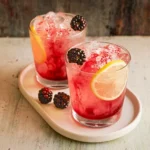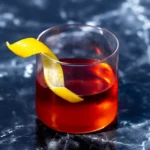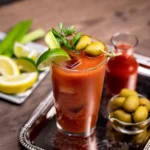Vermouth is a versatile and flavorful ingredient that can elevate your cocktail game. As an aromatic fortified wine, it comes in various types like sweet, dry, and blanco, each offering unique flavors that can transform ordinary drinks into sophisticated cocktails. Knowing how to use vermouth can open up a world of possibilities for your home bar.
In this article, you’ll discover 12 classic vermouth cocktails that showcase its diverse range. Whether you prefer gin, vodka, whiskey, or rum, there’s a vermouth cocktail that can suit your taste. Each recipe will provide a delightful way to experience this often-underestimated ingredient.
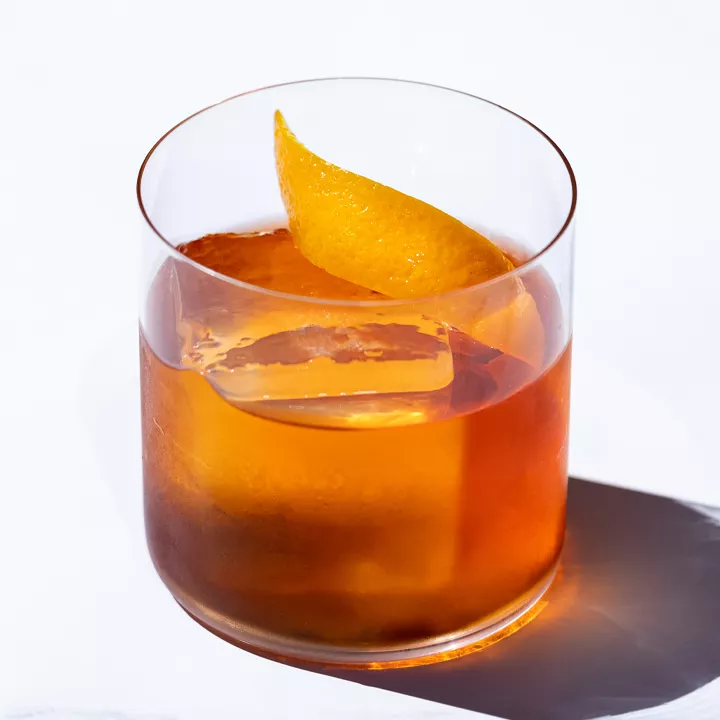
1) Negroni
The Negroni is a classic cocktail that you can make with just three ingredients: gin, sweet vermouth, and Campari. Each ingredient is used in equal parts, which makes the recipe simple and easy to remember.
Start by filling an old-fashioned glass with ice cubes. Pour one ounce of gin over the ice, followed by one ounce of sweet vermouth. Finally, add one ounce of Campari to the glass.
Stir the mixture well until it is nicely chilled. To finish, garnish your Negroni with an orange twist or slice. This touch of citrus adds a fresh aroma and a bit of brightness to the drink’s flavor.
The Negroni’s taste is a balanced mix of bitter, sweet, and herbal notes. It’s a great drink to enjoy before a meal, as its bitterness can stimulate your appetite. If you like your cocktails strong and flavorful, the Negroni is a perfect choice.
You can also experiment by adjusting the proportions slightly or trying different brands of gin and vermouth. Each variation can bring new dimensions to this timeless cocktail.
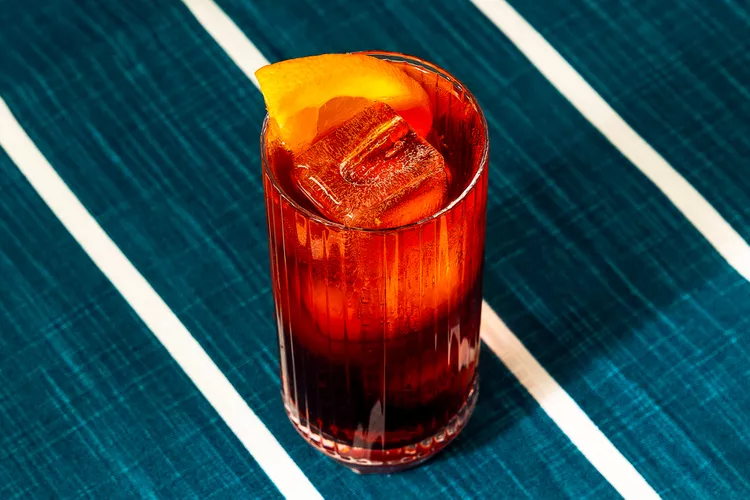
2) Americano
The Americano is a classic cocktail from the 1860s. It was first served at Gaspare Campari’s bar in Milan, Italy. This drink is simple yet refreshing, using just three ingredients.
To make an Americano, you need Campari, sweet vermouth, and club soda. Start by filling a highball glass with ice.
Pour in 1½ ounces of Campari and 1½ ounces of sweet vermouth. Add a splash of chilled club soda. Gently stir to combine the ingredients.
The Americano is perfect for those who enjoy a bitter yet balanced flavor. The combination of Campari and sweet vermouth provides a bittersweet taste. The soda water adds a bubbly finish, making it light and easy to drink.
This cocktail is a great choice for relaxing on a warm evening. It is also a good introduction to bitters for those new to this type of cocktail.
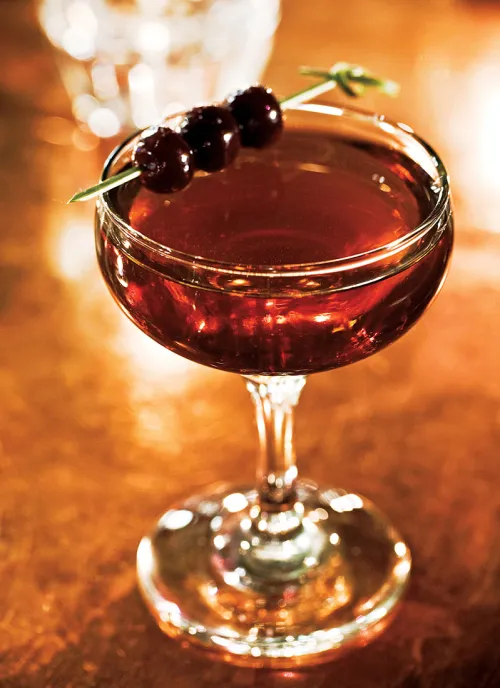
3) Manhattan
The Manhattan is a classic cocktail known for its sophistication and timeless appeal. It dates back to the late 1800s and has been a staple in bars ever since.
To make a Manhattan, you need three main ingredients: whiskey, sweet vermouth, and bitters. The standard ratio is two parts whiskey to one part vermouth, with a dash of bitters.
Whiskey is the base of the Manhattan. You can use either bourbon or rye whiskey, depending on your preference. Rye whiskey often gives a spicier flavor, while bourbon adds a touch of sweetness.
Sweet vermouth adds a layer of complexity to the Manhattan. It brings sweetness and a slight herbal note to balance the strong flavors of the whiskey.
Bitters are the finishing touch. Just a dash or two can elevate the drink, adding depth and enhancing the overall flavor profile.
To prepare, combine the ingredients in a mixing glass with ice. Stir well, then strain into a chilled glass. Garnish with a cherry, and your Manhattan is ready to enjoy.
The Manhattan has inspired many variations, such as the Rob Roy, which uses Scotch instead of whiskey. Despite these variations, the original Manhattan remains a favorite among cocktail enthusiasts.
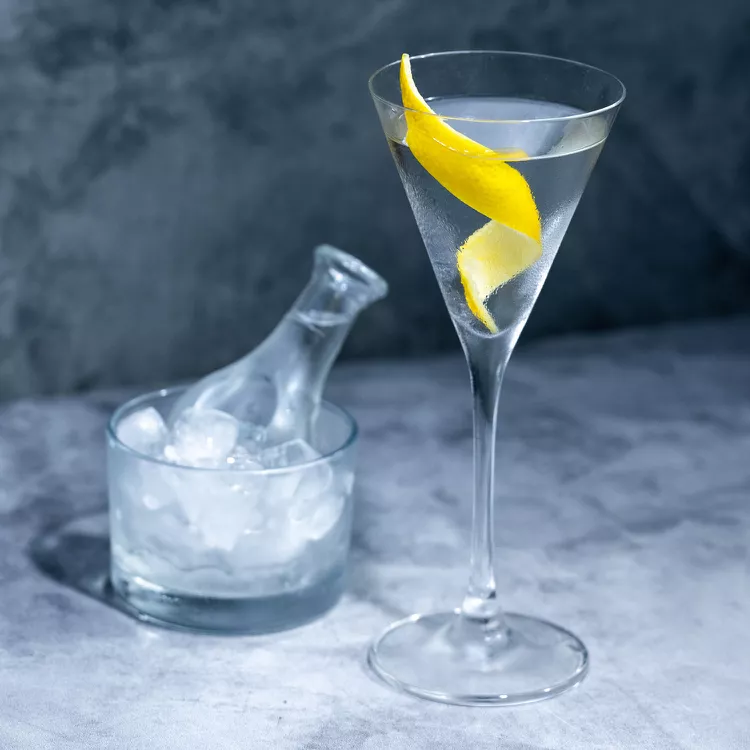
4) Martini
The Martini is a timeless classic. It’s a cocktail that’s both simple and sophisticated. You only need a few ingredients: gin or vodka, and dry vermouth. Despite its simplicity, the Martini requires careful preparation to get it just right.
To make a Martini, you start with your choice of gin or vodka. Gin provides a more herbal and complex taste, while vodka offers a smoother and cleaner flavor. Next, you’ll add dry vermouth. This ingredient adds depth and body to the drink, making it essential even if you prefer a less pronounced flavor.
The ratio of gin or vodka to vermouth can vary. A common ratio is 2.5 ounces of gin or vodka to 0.5 ounces of dry vermouth. Some prefer a drier Martini with even less vermouth, while others enjoy a more balanced mix.
Mix the ingredients with ice until well chilled, then strain into a chilled glass. You can garnish your Martini with either an olive or a lemon twist, depending on your taste. Both add a final touch of elegance and a hint of flavor.
The Martini is not just a drink; it’s an experience. From the choice of spirit to the garnish, each element plays a crucial role in creating this iconic cocktail.
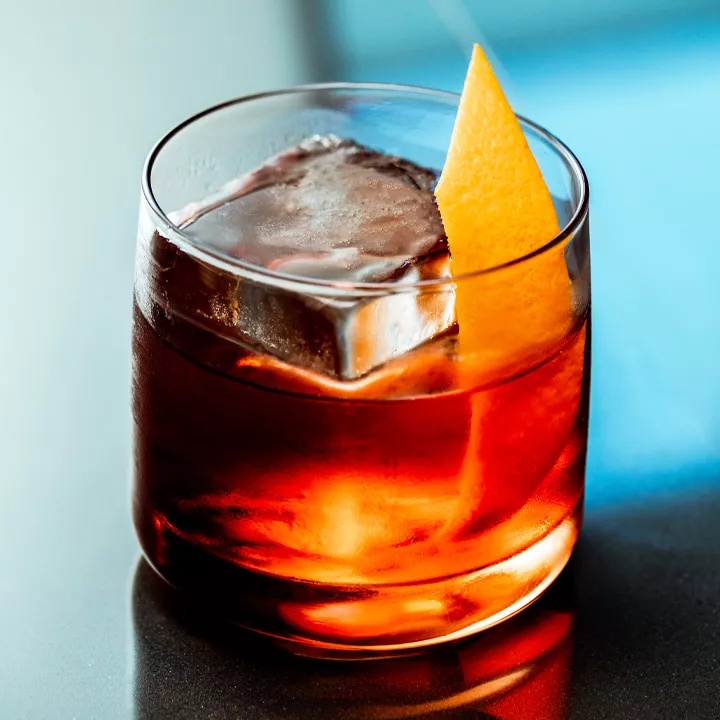
5) Boulevardier
The Boulevardier is a delightful cocktail that brings together bourbon, Campari, and sweet vermouth. This drink is similar to a Negroni but swaps the gin for bourbon, giving it a rich and robust flavor.
To make a Boulevardier, you will need equal parts of bourbon, Campari, and sweet vermouth. Pour these ingredients into a mixing glass filled with ice. Stir the mixture for about 30 seconds to chill it well.
Once the drink is chilled, strain it into a rocks glass filled with fresh ice. Garnish with an orange twist to add a splash of citrus aroma. This garnish not only looks appealing but also enhances the drink’s taste.
The Boulevardier offers a balanced profile. The bitterness of Campari complements the sweetness of vermouth and the warmth of bourbon. This combination makes it a perfect pre-dinner drink.
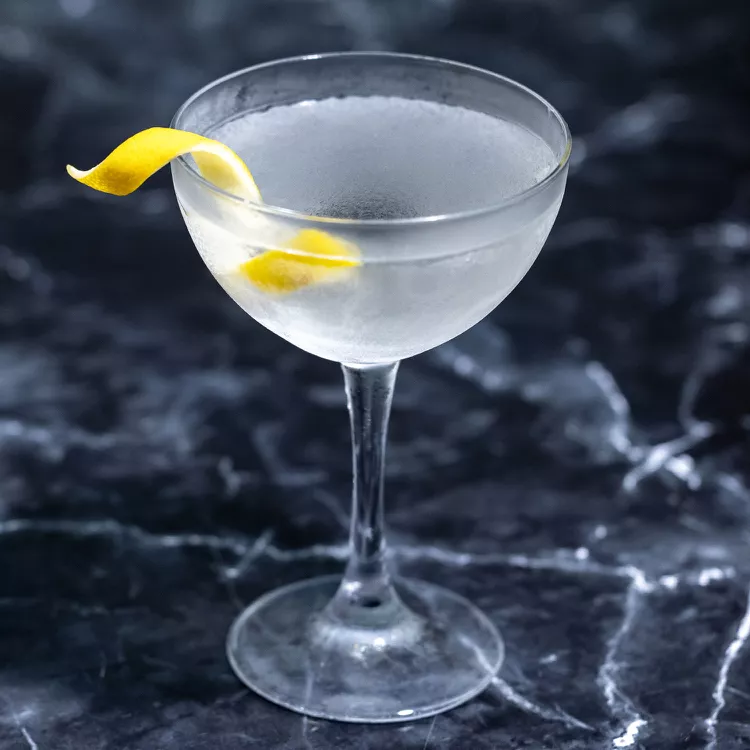
6) Vesper
The Vesper is a classic cocktail known for its unique blend of gin, vodka, and Lillet Blanc. This drink was made famous by James Bond in the novel “Casino Royale.”
To make a Vesper, you need 3 ounces of gin, 1 ounce of vodka, and 0.5 ounces of Lillet Blanc or dry vermouth.
Fill a cocktail shaker with ice and add the gin, vodka, and Lillet Blanc. Shake well to mix and chill the ingredients.
Strain the mixture into a chilled cocktail glass. Garnish with a thin slice of lemon peel for added aroma and flavor.
The Vesper is both crisp and refreshing, offering a balanced taste that combines the botanicals of gin with the smoothness of vodka and the slight sweetness of Lillet Blanc.
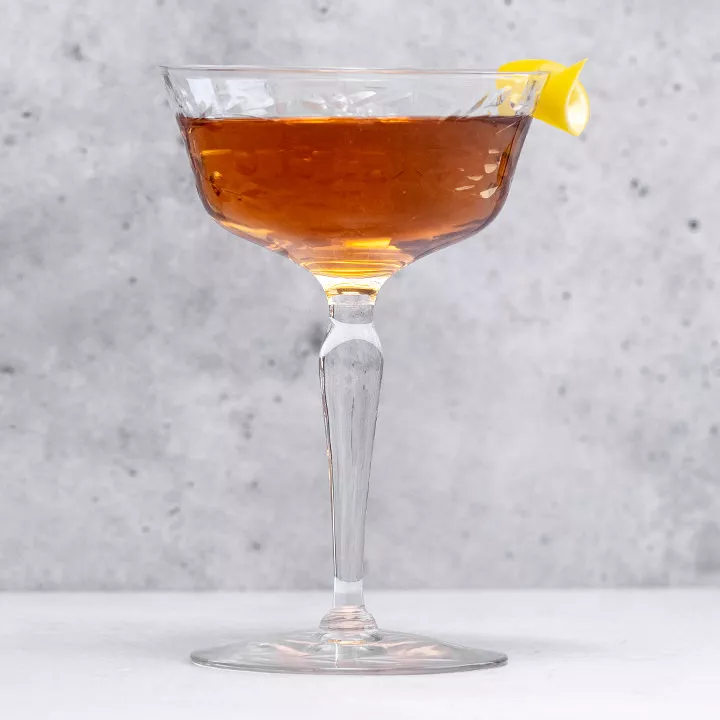
7) Bamboo Cocktail
The Bamboo Cocktail is a timeless drink combining sherry and vermouth. This cocktail has been around since the late 19th century, making it a classic choice for any occasion. It’s known for its delicate balance and low alcohol content.
To make a Bamboo Cocktail, you’ll need fino sherry, dry vermouth, and bitters. Start by filling a mixing glass halfway with ice. Pour in the sherry, vermouth, and a few dashes of bitters.
Stir the mixture well for about 30 seconds, or until it is nicely chilled. Strain the cocktail into a chilled glass. For a final touch, twist a lemon peel over the drink to release its oils, then use the peel as a garnish.
There are several variations of the Bamboo Cocktail. Some recipes use sweet vermouth instead of dry. You can also experiment with the type of sherry, such as Palo Cortado, for a richer flavor. No matter which variation you choose, the Bamboo Cocktail remains simple yet elegant.
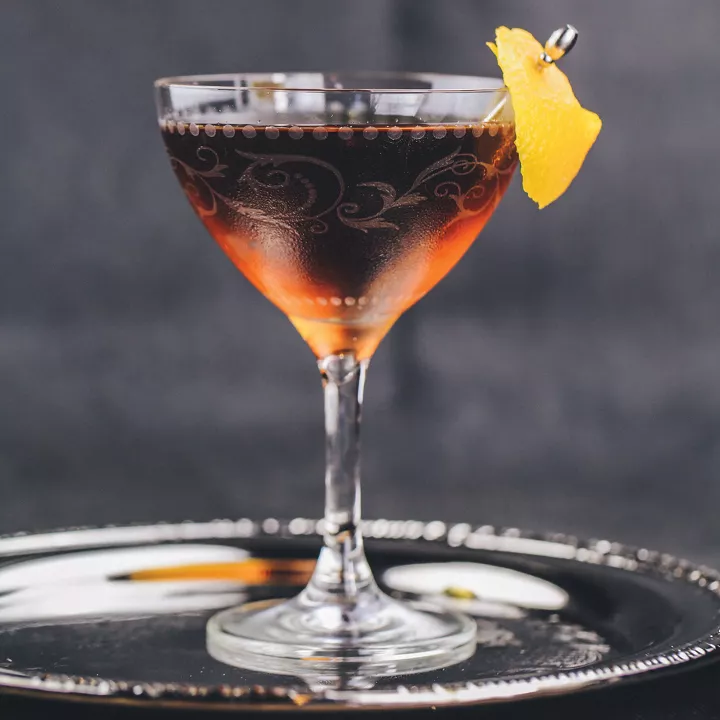
8) Adonis
The Adonis cocktail is a timeless, low-alcohol drink. It was named after the Broadway musical “Adonis,” which was a hit in the 1880s.
To make an Adonis, you need two main ingredients: sherry and sweet vermouth. Use equal parts of each. Add two dashes of orange bitters to enhance the flavor.
Stir all the ingredients with ice. Strain into a chilled glass. It’s aromatic and smooth, making it a great choice for lighter sipping.
This cocktail dates back to the late 19th century. It was first printed in Jack Grohusko’s 1916 book “Jack’s Manual.” Another notable mention is Albert Stevens Crockett’s 1931 “Old Waldorf Bar Days.”
The Adonis is a refreshing blend. You can enjoy it during pre-dinner gatherings or other relaxed settings.
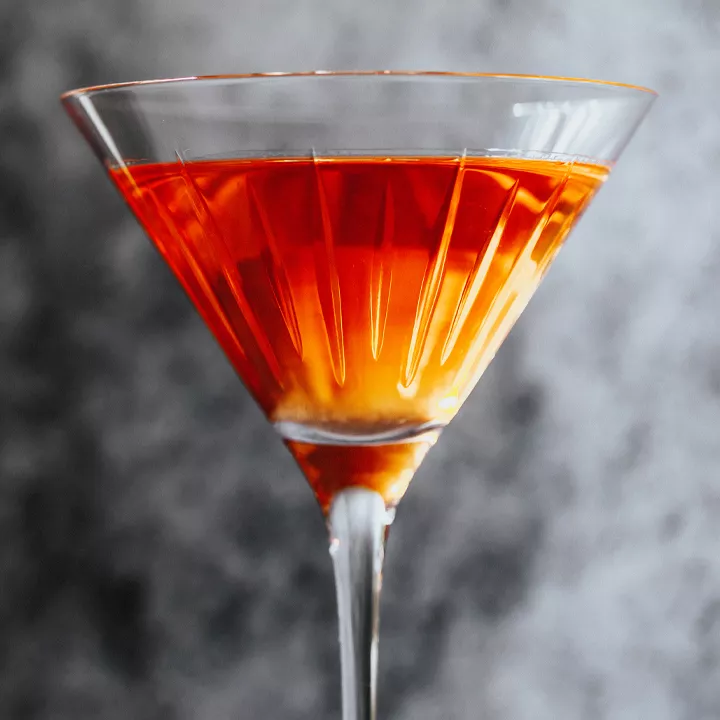
9) El Presidente
El Presidente is a classic cocktail from Cuba. It’s known for its balance of flavors and a beautiful blend of spirits.
You need white rum, dry vermouth, orange curaçao, and grenadine.
Start by chilling a coupe glass with ice and water.
In a mixing glass, combine 2 oz of white rum, 1 oz of orange curaçao, 1 oz of dry vermouth, and 1 tsp of grenadine.
Fill the mixing glass with ice and stir well to chill the cocktail.
Discard the ice and water from your coupe glass.
Strain the mixture into the chilled coupe glass.
Garnish with a twist of orange peel.
This drink offers a refreshing combination of rum and citrus with a hint of sweetness.
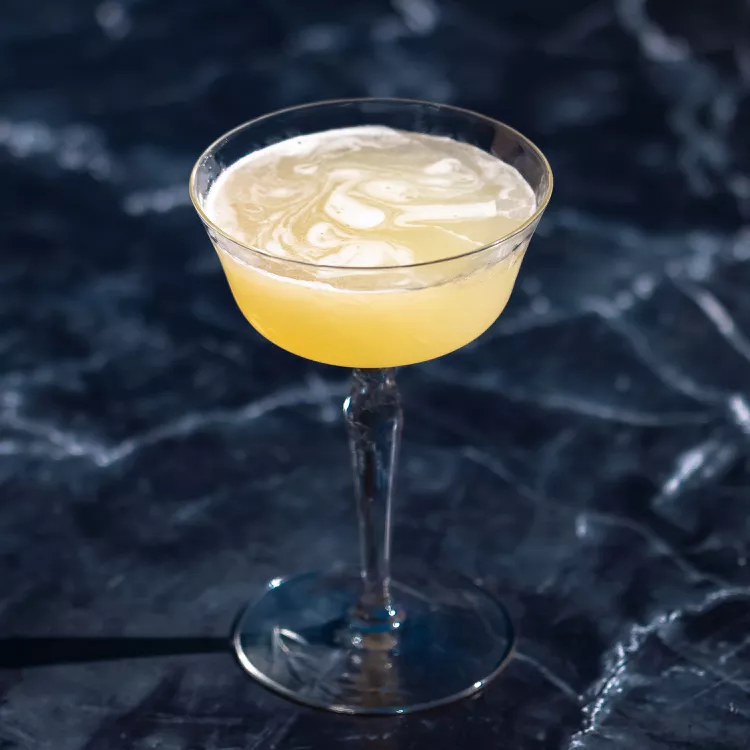
10) Corpse Reviver #2
The Corpse Reviver #2 is a well-known classic cocktail. It gained fame in the 1930s, particularly from the Savoy Cocktail Book. This drink is a perfect blend of gin, Lillet Blanc, orange liqueur (like Cointreau or Triple Sec), fresh lemon juice, and a touch of absinthe.
To make it, first, rinse a chilled coupe or cocktail glass with absinthe and discard the excess. This step adds a light anise flavor. Next, combine equal parts gin, Lillet Blanc, orange liqueur, and lemon juice in a shaker with ice. Shake well until the mixture is cold.
Strain the mixture into the prepared glass. The balance of citrus, herbal, and slightly sweet notes makes this cocktail refreshing. The absinthe rinse gives it a unique and subtle complexity. This drink is bold but not overwhelming, making it a favorite among classic cocktail enthusiasts.
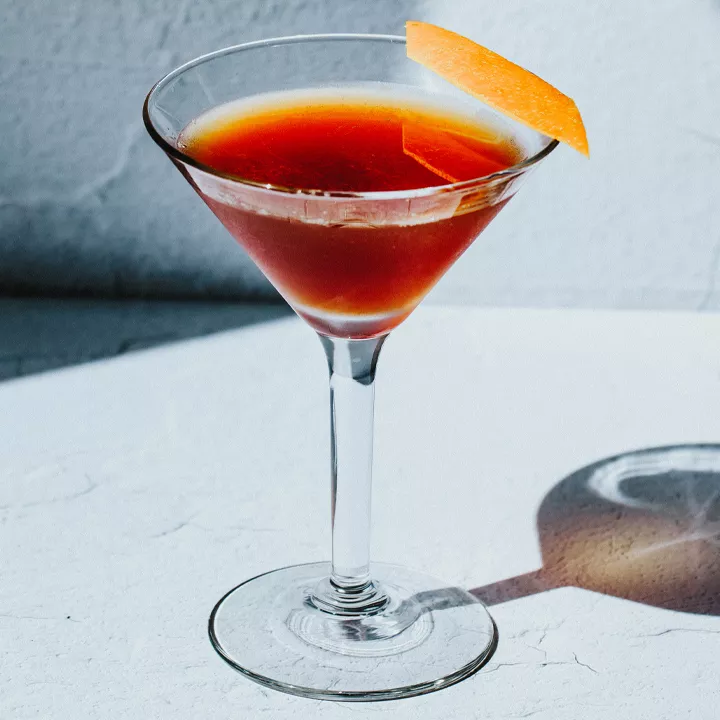
11) Blood and Sand
The Blood and Sand cocktail is a classic drink that dates back to at least 1930. It’s named after the 1922 movie “Blood and Sand,” reflecting its origins in Hollywood.
You will need blended Scotch whisky, sweet vermouth, cherry liqueur, and freshly squeezed orange juice. For equal balance, use 3/4 oz of each ingredient.
Fill a cocktail shaker with ice, add the ingredients, and shake until well-chilled. Strain the mixture into a chilled coupe or cocktail glass.
Garnish with an orange peel for a touch of elegance. This cocktail combines the rich flavors of Scotch and the sweetness of cherry liqueur with the bright acidity of orange juice.
The result is a smooth, well-balanced drink that’s perfect for any occasion.
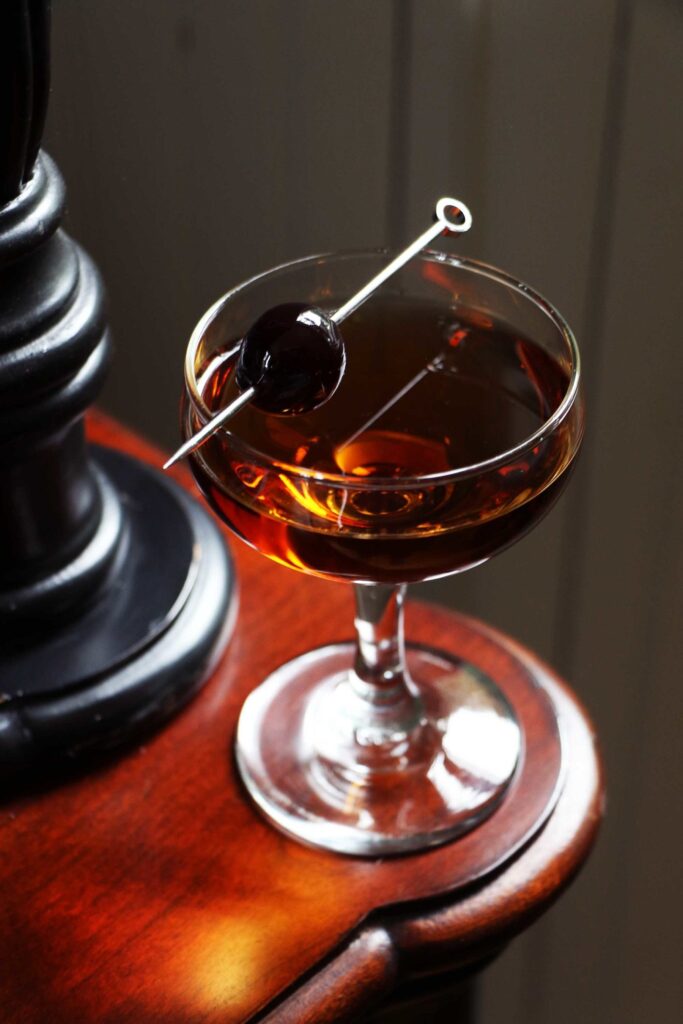
12) Remember the Maine
Remember the Maine is a classic cocktail with a rich history. It dates back to the 1930s and is named after the USS Maine, which sank in 1898. This drink combines absinthe, rye whiskey, sweet vermouth, and cherry liqueur.
You start by adding absinthe to a chilled coupe glass. Swirl the absinthe around to coat the inside, then discard the excess. This step gives the drink its unique aroma and flavor.
In a separate mixing glass filled with ice, combine rye whiskey, sweet vermouth, and cherry liqueur. Stir these ingredients until they are well-chilled. This ensures that the flavors mix smoothly and the drink is cold.
Strain the mixture into the absinthe-coated coupe glass. For a final touch, garnish with a brandied cherry. The cherry adds a hint of sweetness and a touch of elegance to the presentation.
History of Vermouth
Vermouth has a rich history that dates back centuries. From its medicinal roots to its vital role in modern cocktails, vermouth has seen significant transformations.
Origins and Evolution
Vermouth originated in ancient Greece, where it was known for its medicinal properties. Hippocrates, the famous Greek physician, used wormwood and other herbs to create a fortified wine, which is considered the predecessor of vermouth. This mixture was believed to aid digestion and provide other health benefits.
By the 18th century, vermouth production had spread to Italy and France. Italian and French producers started adding various botanicals, such as spices, herbs, and roots, to create unique flavors. The Italian vermouth is usually sweet, while French vermouth is known for being dry. Each region’s distinct approach helped define the diversity we see in vermouth today.
Cultural Impact
In the late 19th and early 20th centuries, vermouth became a crucial ingredient in many cocktails. Drinks like the Manhattan, Martini, and Negroni gained popularity and cemented vermouth’s place in cocktail culture. These cocktails highlighted the versatility of vermouth, whether sweet or dry.
During Prohibition in the United States, vermouth’s popularity dipped but quickly rebounded in the mid-20th century. Today, with the resurgence of classic cocktails, vermouth has found a new generation of enthusiasts. Modern bartenders continue to experiment with it, creating innovative cocktails that honor its history while pushing the boundaries of creativity.
Types of Vermouth
Vermouth comes in several varieties, each with its own unique flavor profile and use in cocktails. Learn about dry, sweet, blanc, and red vermouth below to find out which one suits your taste and recipes best.
Dry Vermouth
Dry vermouth is known for its pale color and less sweet taste. It often has herbal and floral notes, making it a key ingredient in classic martini recipes.
Produced mainly in France, dry vermouth is usually enjoyed with gin or vodka. Its lower sugar content makes it a great choice for balancing out strong spirits. You can also add a splash to cooking for added depth.
Popular brands include Noilly Prat and Dolin.
Sweet Vermouth
Sweet vermouth, also known as red vermouth, is characterized by its rich, darker color and sweeter taste. Originating in Italy, this type is perfect for classic cocktails like the Manhattan and Negroni.
Full-bodied and aromatic, sweet vermouth includes flavors such as caramel, vanilla, and dark fruits. It’s often enjoyed with bourbon or rye whiskey. In addition to cocktails, you can savor it on its own over ice.
Some well-known brands are Carpano Antica Formula and Martini & Rossi.
Blanc Vermouth
Blanc vermouth, known for its clear or slightly golden appearance, lies between dry and sweet vermouth in terms of sweetness. It offers a slightly sweet but balanced taste with citrus and herbal undertones.
A popular choice in French aperitifs, blanc vermouth is perfect for lighter cocktails. Its versatility allows it to pair well with both clear and dark spirits. Try it in a spritz or enjoy neat.
Notable brands include Dolin Blanc and Lillet Blanc.
Red Vermouth
Red vermouth, not to be confused with sweet vermouth, has a bolder and more intense flavor. Its deep red color comes from added caramel and various botanicals, providing a complex taste profile.
Often enjoyed as an aperitif, red vermouth is used in various rich cocktails. Expect to taste spices and bitter notes, making it suitable for mixing with stronger spirits like gin or whiskey.
Popular brands include Punt e Mes and Cocchi Vermouth di Torino.
Mixing Techniques
Knowing how to mix vermouth cocktails correctly can improve both the flavor and appearance of your drinks. The right techniques ensure that ingredients are well-integrated and visually appealing.
Stirring vs Shaking
Stirring and shaking are two common techniques for mixing vermouth cocktails.
Stirring
- Ideal for cocktails that are mostly spirits, like the Martini.
- Gently combines ingredients without adding air.
- Maintains a clear appearance.
- Typically done in a mixing glass with ice.
Shaking
- Used for cocktails with juices, syrups, or egg whites.
- Mixes ingredients thoroughly and adds a frothy texture.
- Results in a cloudy drink.
- Done in a shaker with ice and strained into a glass.
Stirring is preferred for a clear, smooth drink, while shaking creates a more dynamic and frothy experience.
Glassware Selection
The right glass can elevate your vermouth cocktail.
Martini Glass
- Classic choice for spirit-forward cocktails like the Martini.
- Keeps ingredients chilled and provides a sophisticated look.
Highball Glass
- Used for cocktails served with more mixers, like vermouth and tonic.
- Tall and slim, perfect for fizzy drinks.
Rocks Glass
- Common for short, strong cocktails like Negroni.
- Allows you to use large ice cubes, which melt slowly and keep the drink cool without diluting it too much.
Selecting the proper glass not only enhances the look but also the drinking experience of your vermouth cocktail.
Garnishing Tips
Garnishes add a finishing touch to your vermouth cocktails.
Olives and Lemon Twists
- Classic garnishes for martinis.
- Olives add a salty touch, while lemon twists bring a hint of citrus aroma.
Herbs
- Fresh herbs like basil or rosemary can complement the flavor profile.
- A sprig of your chosen herb can also be a visually appealing garnish.
Citrus Slices and Peels
- Use thin slices of orange or lemon for a pop of color and fresh scent.
- Citrus peels can be twisted over the drink to release oils before adding them as a garnish.
Thoughtful garnishing not only completes the drink’s appearance but also enhances its flavor and aroma.



